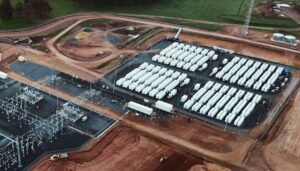Big Coal is rapidly running out of big friends. As China announced bans on new coal-fired generation in its capital Beijing, and its two biggest industrial areas, the United States is about to follow with new emissions standards that amount a de-factor ban across the country.
The decision by the world’s two biggest economies, electricity users and greenhouse gas emitters, to put a cap on coal consumption and an end to new development to come as numerous investment houses produce analyses that – in the words of one of them, Bernstein Research – predict “the end of coal”.
Of course, coal-fired generation will not simply disappear, but the economic drivers to build new thermal coal mines and export facilities will. Bernstein Research says the move away from coal – particularly in China – effectively removes the “backstop behind every new investment in coal mining over the last decade”, a critical consideration for those contemplating investment in multi-billion infrastructure and mines in the Galilee Basin and elsewhere in Australia.
Under rules announced in China by the State Council late last week, new coal-fired power plants will be banned in the region surrounding Beijing, in the Yangtze Delta region near Shanghai and in the Pearl River Delta region of Guangdong province.
Analysts say the new rules will not result in an immediate decrease in coal consumption – and could simply more the source of generation to inland areas – but it is part of a growing trend to reduce coal fired generation. It marks a rapid turnaround in the policy approach by the government, and sends an important signal that it is seeking to control pollution levels on the eastern seaboard, which the State Council has described as “grim” and harmful to health.
The state council wants to cut air pollution levels – the density of fine particulate matter — in Beijing by 25 per cent by 2017, and to increase the share of wind and solar in that region to 13 per cent by 2017 from 9.1 per cent now.
In the US, meanwhile, the Environment Protection Authority is preparing to announce new emissions regulations that will amount to a de-facto ban on new coal-fired plants, unless they are fitted with carbon capture and storage technology, which is not yet commercial.
The new rules are seen as part of President Barack Obama’s wish to leave a “legacy item” as part of the Climate Change Action Plan he re-embellished in June, and in the absence of a carbon price that he cannot force through Congress.
Reports in the US suggest the new ruling – to be announced on Thursday or Friday – will put an emissions limit of 500g/MWh on new plant, effectively ruling out new coal plants. This is lower than the previously mooted 650g/MWh, which might have allowed some new highly efficient coal-fired generation – ultra supercritical plants that operate at high load.
Deutsche Bank described it as a de-facto ban, given the absence of the “costly and largely unproven” CCS technology. Although it said it was a moot point, given the competition with shale gas meant the new rules were like “beating a dead horse.”
Nevertheless, it warned, utility and coal interests would continue to lobby – and likely litigate – against the regulations in a bid to keep coal as an option for the future.
There is also a suggestion that gas plants may have emission limits of 450g/MWh, and even peaking plants (which usually have higher emissions of around 600g/MWh) may also be imposed with the same limits at coal fired generation.
Bernstein Research says the implications of China’s cut-down are significant.
“Once Chinese coal demand starts to fall, there is no robust growth market for seaborne thermal coal anywhere,” Bernstein noted in a recent report. That dovetails in with similar conclusions from Citi, Deutsche Bank, Goldman Sachs and HSBC, all of whom have predicted a peak in coal demand in China between now and 2020.
Last week, we reported on the Citi analysis that suggested that under some scenarios, by 2020 the consumption of coal in China could fall to below those levels deemed necessary by the International Energy Agency to meet the 450 parts per million target – although it should be noted that coal consumption is just one part of a brought suite of measures required.
Nevertheless, Australian coal miners continue to push for new mines and infrastructure. Clive Palmer, on the verge of being elected to parliament, wants the new government to deliver approvals for his $8 billion mine, rail and port projects in the Galilee Basin in Queensland. It wants to be at “early stage” development in 2014.
Meanwhile, Whitehaven Coal is facing a legal challenge from the Northern Inland Council for the Environment against approvals granted for the development of its Maules Creek coal mine near Narrabri, while an expansion of the Boggabri mine is also being challenged.
GVK Hancock, part owned by Gina Rinehart, is facing a challenge from the Coast and Country Association of Queensland against its Alpha project, also in the Galilee Basin. The association argues that the mine development should be rejected on the grounds of climate change and impacts on groundwater.









